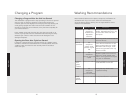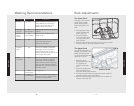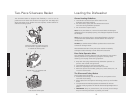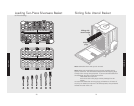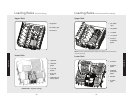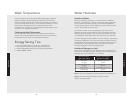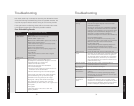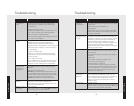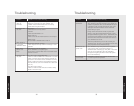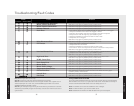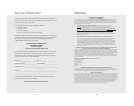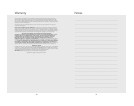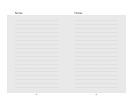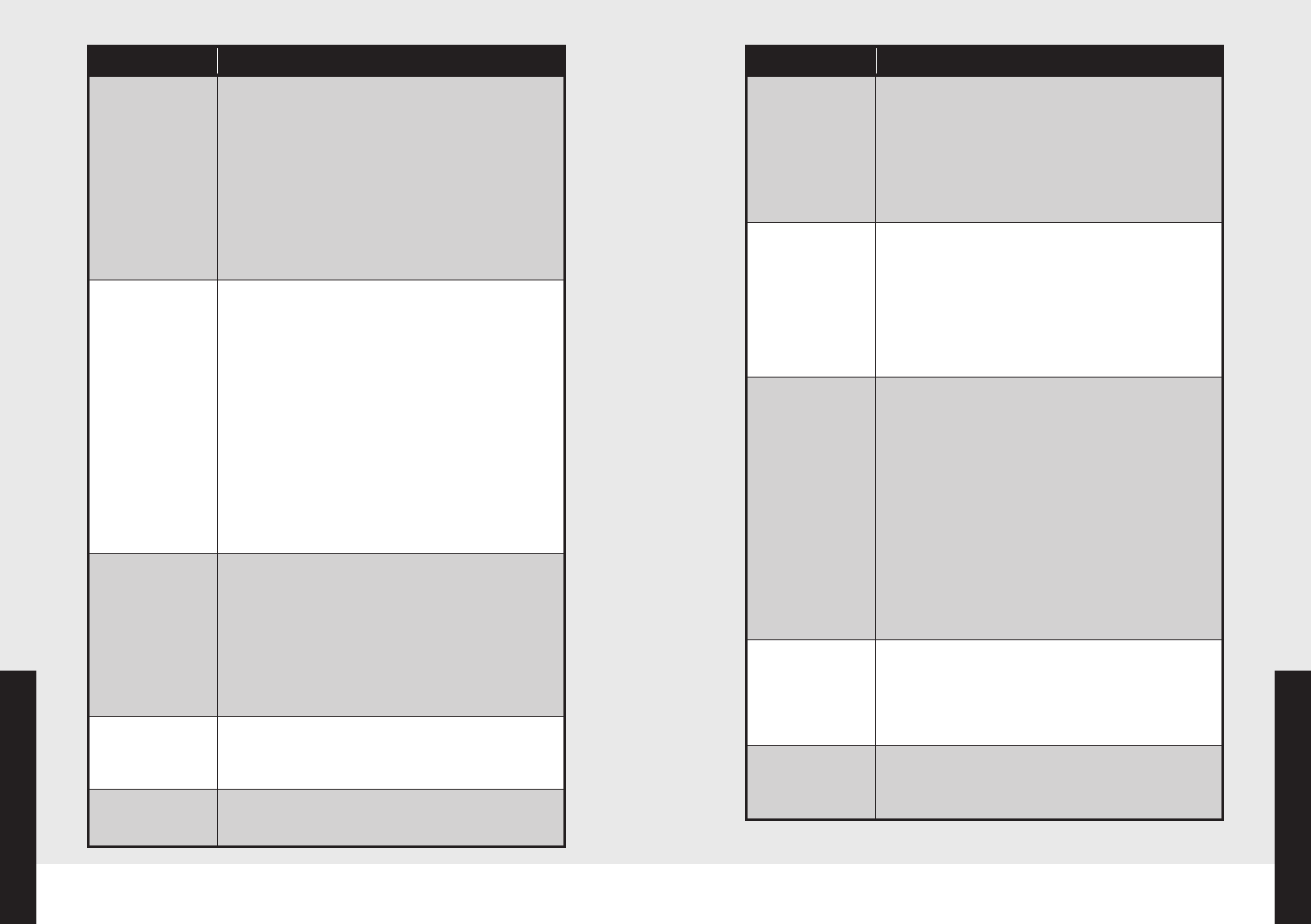
33
Troubleshooting
Product Care
32
Product Care
Troubleshooting
Problem
Possible Cause and/or Remedy
Small particles
deposited on
items
Improper loading of dishes:
Load dishes to prevent water and detergent from
being trapped in or between items. Water should
circulate freely.
Flatware incorrectly loaded:
Pay particular attention to spoons so that they do not
nest in each other and prevent water penetration.
Make sure filters are installed properly.
Filter may have clogged due to heavy sediment, food
soil or hard water conditions.
Yellow or brown
marks
Temporary solution: Pour in one teaspoon to one
tablespoon of citric acid crystals instead of the
prewash detergent. Follow this prewash with a full
detergent wash. Use the pots/pans or normal wash cycle.
Permanent solution: Install an iron removal system in
the water supply.
Copper with sterling silver:
Yellow film on sterling silver results when washing
copper items in the same load. Silver polish usually
removes the stain.
Tea or coffee (tannic acid):
Tea or coffee can stain cups. Remove stains by hand,
using a solution of 1/2 cup bleach and 3 cups warm
water. (Do not use on sterling silver or silverplate.)
Discoloration of
stainless steel,
silverplate, or
sterling silver
Allowing salty foods to remain on flatware
Rinse flatware that is to stand several hours before
washing.
Stainless steel contacting silver:
DO NOT put stainless steel and silver flatware in the
same silverware basket compartment. Direct contact
between these metals can cause permanent damage
to silver. Clean stained items with silver polish.
DO NOT use abrasives on stainless steel or silver.
Discoloration of
plastics
Plastic items have a low heat tolerance:
Plastics vary in their ability to tolerate heat.
Check washing instructions for all plastic items to be
sure they are dishwasher safe.
Marks on melamine
and plastics
Porous material:
Use a special cleaner for plastic. DO NOT use bleach
or scouring powder on these materials.
Problem
Possible Cause and/or Remedy
Detergent left in
detergent
compartment
Compartment cover blocked:
The cover may not be opening because of improperly
loaded items.
Move dishes that may be blocking it.
Old detergent:
If detergent is hard or caked in the box, throw away.
Use only fresh detergent. Add detergent just before
starting the dishwasher.
Cloudy film on
glassware-etching
of glass
Too much detergent: especially in soft water.
If vinegar or citric acid rinse doesn’t remove film, the
cloudiness is “etching.” This is permanent. If you have
soft water, use the least amount (one teaspoon) of
recommended dishwasher detergent to prevent
etching. Use high quality dishwashing detergent and
rinse aid. Do not overload the machine. Water
should circulate freely to assure adequate rinsing and
draining. Dry without heat.
Dishes not dry Non-heat drying:
Allow more drying time when using non-heat drying.
No rinse agent:
Fill rinse agent dispenser. Rinse agent helps dishes to
dry faster.
Plastic items:
Certain plastic materials are difficult to dry.
Plastics may need towel drying.
Improper loading or unloading:
Do not overload or nest items. Be sure all surfaces
drain well. Load items with concave bases so as much
water as possible can run off. Unload the lower rack
first. Water from dishes in the upper rack may be
spilling onto the lower rack.
Chipping or
breaking of
glassware
Improper loading:
Do not overload. Load between prongs, not over
them. Glasses loaded over prongs are not supported
and may break. Make sure glassware is secure.
Always use upper rack for delicate items. Use the
light/china cycle.
Unusual noise
Improper loading:
Utensils may not be secure or may have dropped from
the rack. Water may cause utensils to rattle. Make sure
everything is securely placed in dishwasher.




